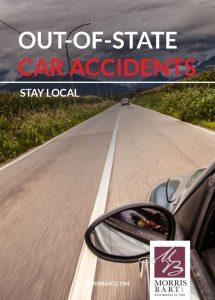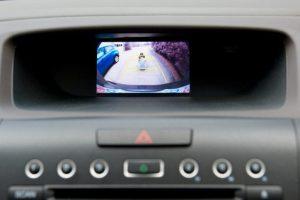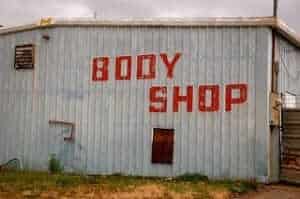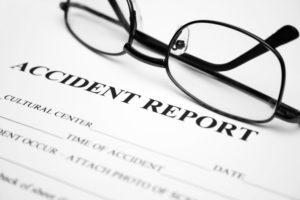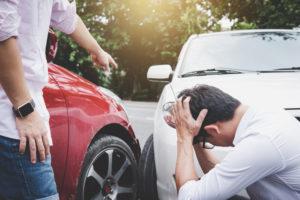
Whether you drive in city traffic or on a tree-lined suburban street, you can’t always avoid auto accidents. Wherever you go, you share the road with speeding, distracted, and careless drivers. Unless the other driver’s negligence in causing your accident is crystal clear, someone must determine who is at fault.
As a driver, you tell your version of an accident, but that’s just one factor in the decision-making process. The other driver’s insurer usually determines whether they should pay you or deny liability for your claim. When insurers and damaged parties can’t resolve their differences, arbitrators, attorneys, judges, or juries eventually make the final determination.
A Police Officer doesn’t Determine Fault
Many jurisdictions require you to make a police report when your auto accident causes injuries or extensive property damage. Police officers play an important role in documenting driver and witness versions, accident scene conditions, and other relevant facts.
If a car accident lawsuit ends up in court, police officers provide testimony, confirming the facts in their report. They testify about driver impairment, physical evidence observed after a crash, and their rationale for issuing any citations for criminal behavior. As fault is a legal conclusion, if an officer gives an opinion about it, it’s just an opinion.
For a free legal consultation, call (800) 537-8185
Insurance Companies Make the Initial Liability Decisions
An insurance company representative usually decides who is at fault for an auto accident. Each driver’s insurer determines if they owe damages under their insured’s liability policy. They conduct an independent investigation, often using a police report as a formal record of documented parties and facts.
Once an insurer’s representative completes an investigation, they inform you if they intend to pay your liability claim. If you’re seeking payment for vehicle damage, medical payments, or uninsured motorist damages, your own insurer makes decisions based on written agreements in your insurance policy.
Insurance Companies Follow a Process When Determining Fault
When a driver reports an auto accident claim with serious injuries or extensive property damage, their insurance company usually conducts a more comprehensive investigation. The company may interview drivers and witnesses, take photos of the scene, and call in experts. Once the claim handler completes their investigation, they evaluate the evidence and determine fault based on these elements of negligence:
- The duty owed: Did their insured driver have a duty to perform in a certain way: stop, slow down, pay attention, etc.?
- Duty breached: Did he/she fail to meet that duty?
- Proximate cause: Were their actions the proximate cause of your accident?
- Damages: Did the crash cause your injuries or property damage?
If an insurer decides that their client’s negligent actions did not cause your accident, they deny liability and refuse to pay your claim. Your own insurer pays any benefits owed based on your policy provisions. If you make an uninsured motorist claim, your insurer also considers liability issues and whether the other person has valid liability insurance.
Insurers have a right and an obligation to make decisions on behalf of their insured. If you don’t agree with their decision on fault, a personal injury attorney can provide additional options. Although it’s best to contact an attorney immediately after your accident, they can still review and discuss your case after an insurer denies liability.
What Can a Personal Injury Attorney do to Help You Recover Damages?
Unless your statute of limitations is fast approaching, a personal injury attorney may be able to resolve your case without filing a lawsuit. Law firms have access to formal and informal methods for resolving auto accident fault and damage issues.
- Informal Negotiation: Your attorney investigates and evaluates your auto accident and injuries. They present your case to the liability insurer and negotiate a settlement by phone or in person.
- Litigation: Your attorney files a lawsuit that formally documents your legal and injury issues and preserves your right to make a claim. Although a trial is sometimes the ultimate goal, attorneys often settle litigated cases during an alternative dispute resolution process or a court-affiliated settlement conference.
- Alternative Dispute Resolution: Attorneys meet to participate in mediation, arbitration, binding arbitration, and other processes. Using these forums, attorneys can resolve cases even when you have a lawsuit pending.
- Trial: When adverse parties can’t resolve their legal or damage issues, an attorney presents your evidence in court. In a bench trial, the judge alone determines fault and damages owed. In a jury trial, jurors make these decisions.
What Can You Do to Help Prove Fault After an Accident?
When the cause of an accident is unclear, you become one of the most valuable assets for proving fault. Your responsibilities begin immediately after a crash. Anything you do or say can help determine the outcome of your injury claim.
Never Admit Fault
When you admit fault, your admission often shows up in police reports, claim reports or witness statements. As they are your own words, your admission becomes relevant evidence in deciding who is legally responsible for your accident. You should also never apologize for a crash, as apologies sometimes sound like an admission of fault.
Document the Accident Scene
Unless you’re too injured to move, do whatever you can to document the accident. Accident scenes begin changing immediately after a crash. Your cell phone camera is the perfect tool for preserving evidence before it changes or disappears forever.
- Snap a photo of the other driver’s license and insurance information, and confirm their address. This is important, as some drivers leave accident scenes before police officers arrive.
- Document vehicle details, including make, model, points of contact, damage, license plate details, make and model.
- Capture photos of the accident scene: skid marks, debris, traffic control devices, and street layout.
- Ask witnesses to provide their contact information.
- If necessary, you can take photos while remaining in your car, or you can ask someone to help you get the documentation you need.
Click to contact our personal injury lawyers today
Contact an Attorney at Morris Bart for Help Today
If you’ve sustained injuries in a car accident, you should never try to handle your claim alone. At Morris Bart Law firm, our personal injury attorneys provide seasoned legal help for accident victims and deal directly with responsible parties, their insurance companies, and their lawyers. Our law firm works hard to deliver real results.
To connect with our firm or schedule a free consultation, click on a chat bubble or leave your detailed case description on our contact page.
Questions?Call (800) 537-8185
to find a Morris Bart office near you.


